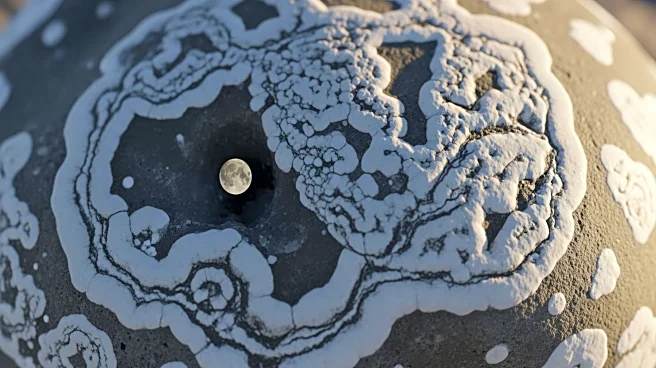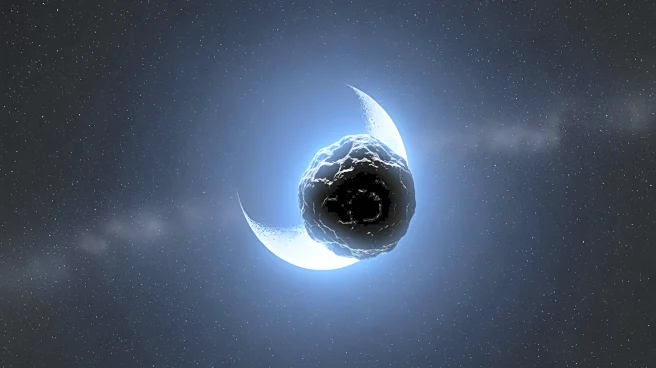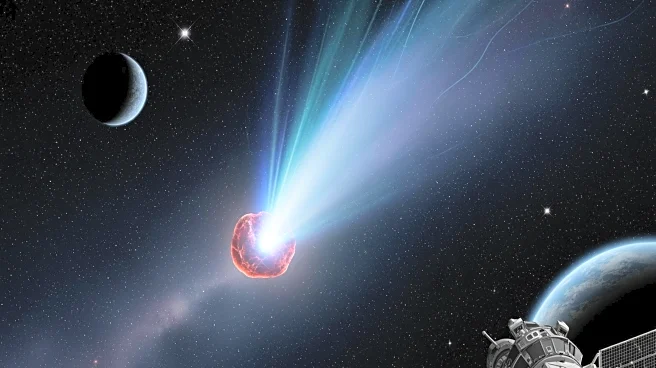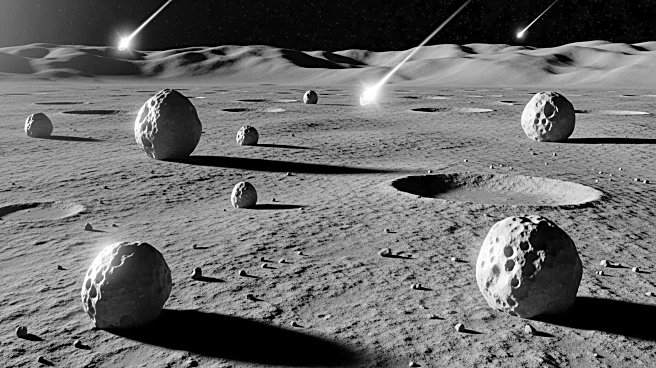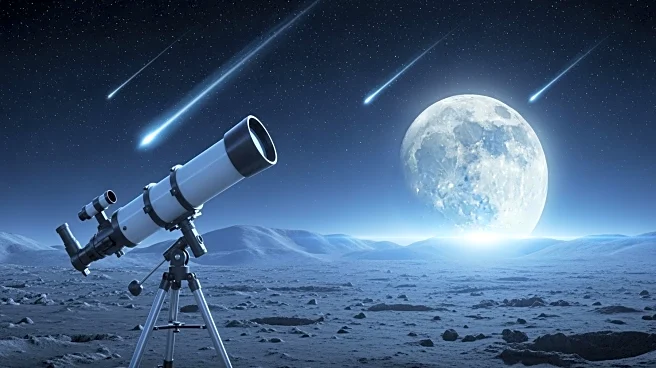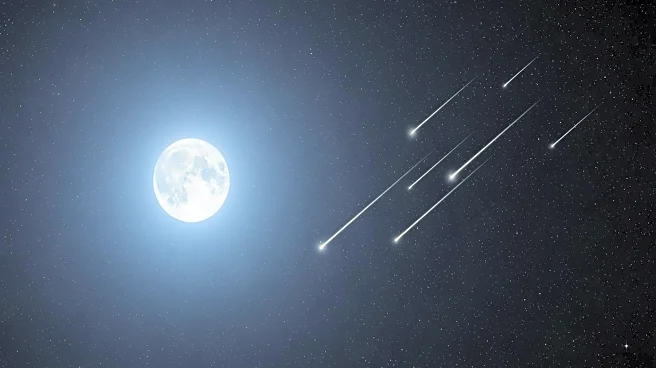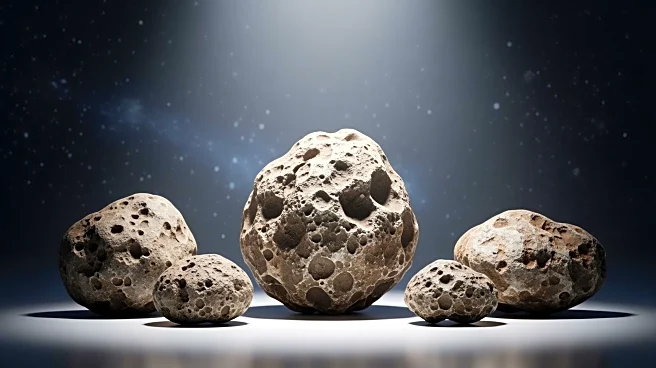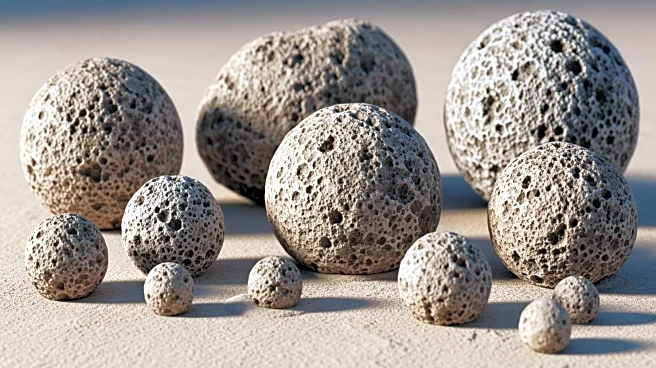What's Happening?
Scientists from the University of Western Australia have conducted a study on 3.7-billion-year-old anorthosite rocks from the Murchison region of Western Australia. These rocks, some of the oldest remnants of Earth's crust, are rich in feldspar crystals
similar to those found in lunar samples. The study suggests a profound link between Earth and its Moon, supporting the 'giant impact' theory. This theory posits that a Mars-sized planet collided with early Earth, ejecting molten debris that eventually coalesced to form the Moon. The isotopic resemblance between the Australian rocks and lunar material indicates that both worlds share a common chemical starting point dating back 4.5 billion years.
Why It's Important?
The findings from this study provide significant insights into the early conditions of our planet and the formation of the Moon. By decoding the isotopic history of these ancient rocks, scientists have illuminated one of the most dramatic moments in the solar system's past. This research bridges geology and cosmology, offering a tangible link between Earth's crust and the Moon's creation. Understanding the chemical signatures within these rocks helps refine the timeline of continental growth and the evolution of Earth's mantle and crust. The study underscores the interconnectedness of Earth and its satellite, highlighting their shared origins.
What's Next?
Further research may focus on analyzing more ancient rocks to deepen the understanding of Earth's early history and the Moon's formation. Scientists might explore other regions with similar geological features to corroborate these findings. The study could also inspire new investigations into the 'giant impact' theory, potentially leading to revised models of planetary formation. As the scientific community digests these results, there may be increased interest in exploring the implications for other celestial bodies formed through similar processes.
Beyond the Headlines
This discovery not only sheds light on the Moon's origin but also prompts a reevaluation of Earth's formative years. The study highlights the importance of ancient geological formations as time capsules preserving the echoes of cosmic events. It also raises questions about the ethical considerations of preserving such rare geological sites for future research. The findings may influence cultural perceptions of Earth's relationship with the Moon, emphasizing their shared history and interconnectedness.
